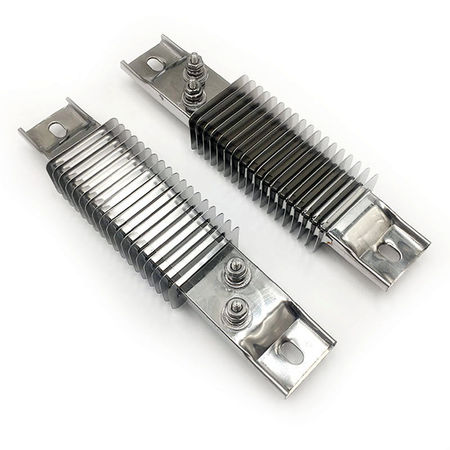
Strip & Strip Finned Heaters
Strip and strip finned heaters are widely used for process air heating, dehydrating, drying, heat sealing, space heating, ducts, etc.
Strip Heaters
Strip heaters are electrical heating elements designed to provide efficient heat to specific areas or surfaces. They are commonly used in a variety of applications, including industrial processes, commercial heating, and residential heating solutions.
Features of Strip Heaters
Design: Typically, strip heaters are flat, rectangular, or linear in shape, allowing for easy installation in tight spaces.
Material: They are often made from materials such as stainless steel or aluminum, which provide durability and resistance to corrosion.
Temperature Control: Many strip heaters come with built-in thermostats or can be integrated with external temperature control systems for precise heating.
Applications: Commonly used for heating surfaces, thawing frozen pipes, and maintaining the temperature of liquids in tanks.
Advantages of Strip Heaters
Efficiency: They provide quick heating and can reach desired temperatures rapidly.
Versatility: Suitable for a wide range of applications across different industries.
Space-Saving: Their slim profile makes them ideal for applications with limited space.
Strip Finned Heaters
Strip finned heaters are a specialized type of strip heater that incorporates fins to enhance their heat transfer capabilities. These fins increase the surface area of the heater, allowing for more efficient heating and improved thermal performance.
Features of Strip Finned Heaters
Finned Design: The fins are typically made of aluminum or copper and are attached to the heating element to maximize heat dissipation.
Increased Surface Area: The fins significantly increase the surface area, which helps in transferring heat more effectively to the surrounding environment.
Applications: Widely used in HVAC systems, industrial drying processes, and in equipment where rapid heat transfer is required.
Advantages of Strip Finned Heaters
Enhanced Heat Transfer: The finned design allows for superior heat distribution compared to standard strip heaters.
Energy Efficiency: By improving heat transfer, they can reduce energy consumption and operational costs.
Durability: Like standard strip heaters, they are built to withstand harsh environments and provide long-lasting performance.
Conclusion
Both strip heaters and strip finned heaters serve essential roles in heating applications across various industries. While standard strip heaters are effective for direct heating, strip finned heaters offer enhanced efficiency through improved heat transfer capabilities. Choosing the right type depends on the specific heating needs and environmental conditions of the application.
Power in Numbers
30
Programs
50
Locations
200
Volunteers
Project Gallery

